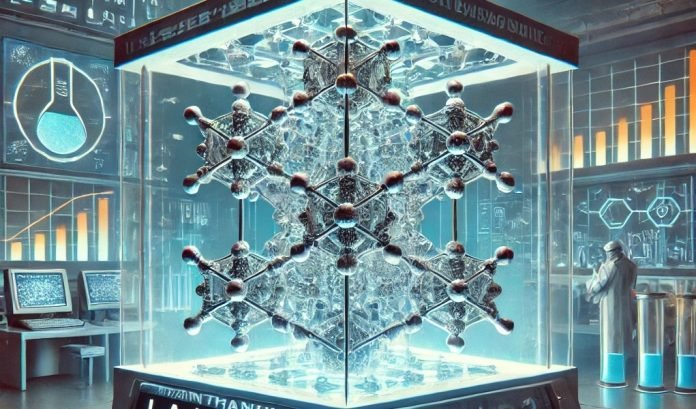
Researchers from Skoltech, Jilin University, Beijing HPSTAR, and Germany have discovered a new hydrogen-rich superconductor with unusual properties.
This compound, called La4H23, is a lanthanum superhydride and shows superconductivity at temperatures below minus 168 degrees Celsius when subjected to a pressure of 1.2 million atmospheres.
The findings were published in the National Science Review.
Polyhydrides, like La4H23, are a new class of compounds created under extremely high pressures, about a million times that of normal atmospheric pressure on Earth.
These compounds can exhibit remarkable superconducting properties, such as very high critical temperatures, up to minus 23 degrees Celsius, and critical magnetic fields reaching 300 tesla.
La4H23 behaves differently from other similar hydrides. In a certain pressure range, it has a negative temperature coefficient of electrical resistance. This means that, unlike ordinary metals where electrical resistance decreases as temperature drops, the resistance of La4H23 increases, similar to semiconductors and unconventional superconductors like cuprates.
Initially, hydrides with an A15-type structure were found in the europium-hydrogen system, followed by the barium-hydrogen and lutetium-hydrogen systems. Researchers predicted that a similar compound would exist in the lanthanum-hydrogen system and have an even higher critical temperature of superconductivity. This prediction led to the discovery of La4H23.
This new lanthanum hydride also exhibits other unusual properties. Normally, in superconductors, the transition to the superconducting state broadens in magnetic fields due to inhomogeneities in the concentration of Cooper pairs. However, in polyhydrides, this broadening is minimal because magnetic vortices are firmly attached to structural inhomogeneities, preventing additional disturbances.
The La4H23 compound, however, shows an unexpected narrowing of superconducting transitions. Dmitrii Semenok from HPSTAR, one of the study’s lead authors, explained that this unusual behavior led them to test the compound in strong pulsed magnetic fields up to 68 tesla.
They discovered that La4H23 has significant negative magnetoresistance, a rare property where the resistance decreases in a magnetic field. This is often seen in unconventional superconductors in their pseudogap or strange metal phase.
Researchers believe that hydrides like La4H23 could bridge the gap between conventional and unconventional superconductors, showing properties of both.
They plan to continue studying various superhydrides in strong magnetic fields to better understand their unique behaviors and potential applications in advanced technologies.



